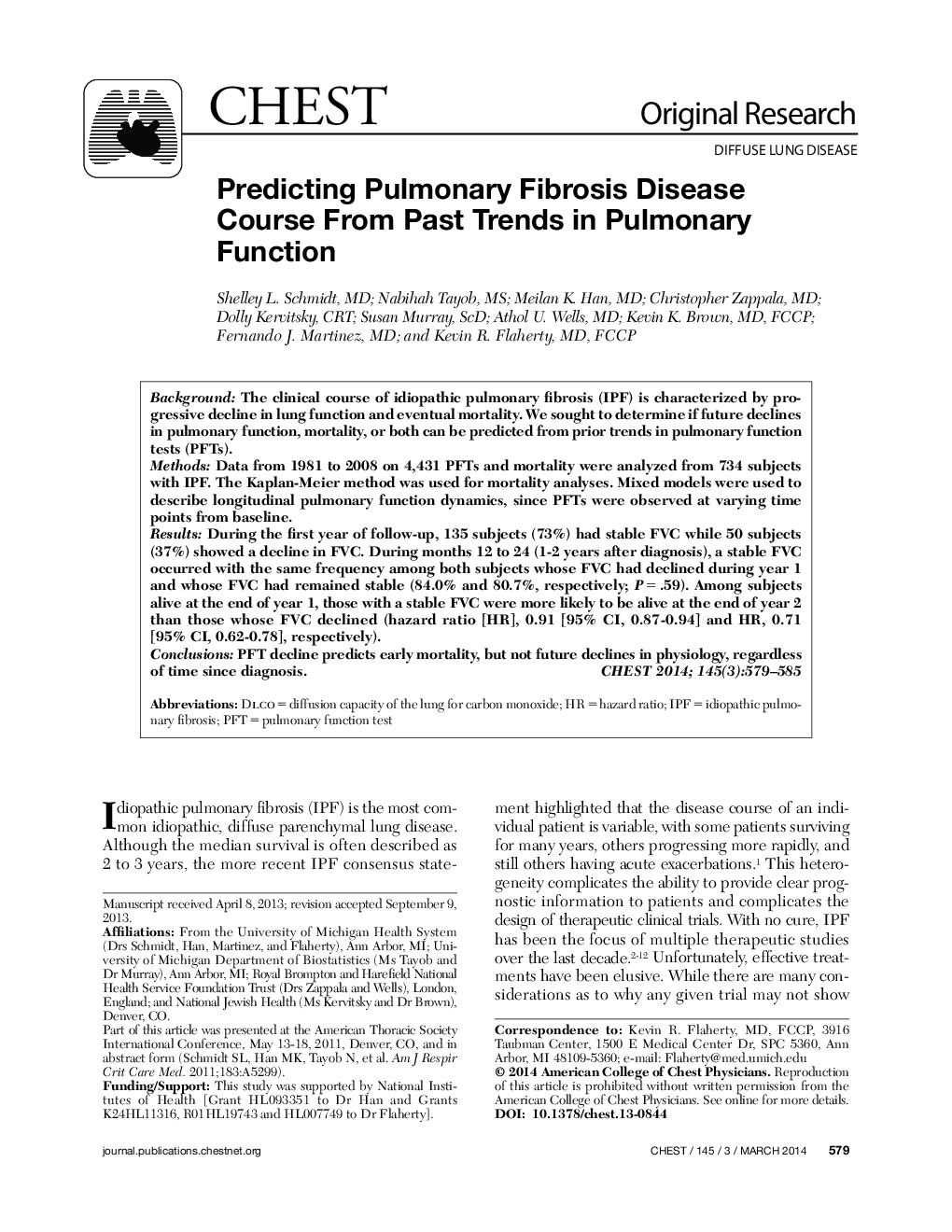| Article ID | Journal | Published Year | Pages | File Type |
|---|---|---|---|---|
| 2900028 | Chest | 2014 | 7 Pages |
BackgroundThe clinical course of idiopathic pulmonary fibrosis (IPF) is characterized by progressive decline in lung function and eventual mortality. We sought to determine if future declines in pulmonary function, mortality, or both can be predicted from prior trends in pulmonary function tests (PFTs).MethodsData from 1981 to 2008 on 4,431 PFTs and mortality were analyzed from 734 subjects with IPF. The Kaplan-Meier method was used for mortality analyses. Mixed models were used to describe longitudinal pulmonary function dynamics, since PFTs were observed at varying time points from baseline.ResultsDuring the first year of follow-up, 135 subjects (73%) had stable FVC while 50 subjects (37%) showed a decline in FVC. During months 12 to 24 (1-2 years after diagnosis), a stable FVC occurred with the same frequency among both subjects whose FVC had declined during year 1 and whose FVC had remained stable (84.0% and 80.7%, respectively; P = .59). Among subjects alive at the end of year 1, those with a stable FVC were more likely to be alive at the end of year 2 than those whose FVC declined (hazard ratio [HR], 0.91 [95% CI, 0.87-0.94] and HR, 0.71 [95% CI, 0.62-0.78], respectively).ConclusionsPFT decline predicts early mortality, but not future declines in physiology, regardless of time since diagnosis.
